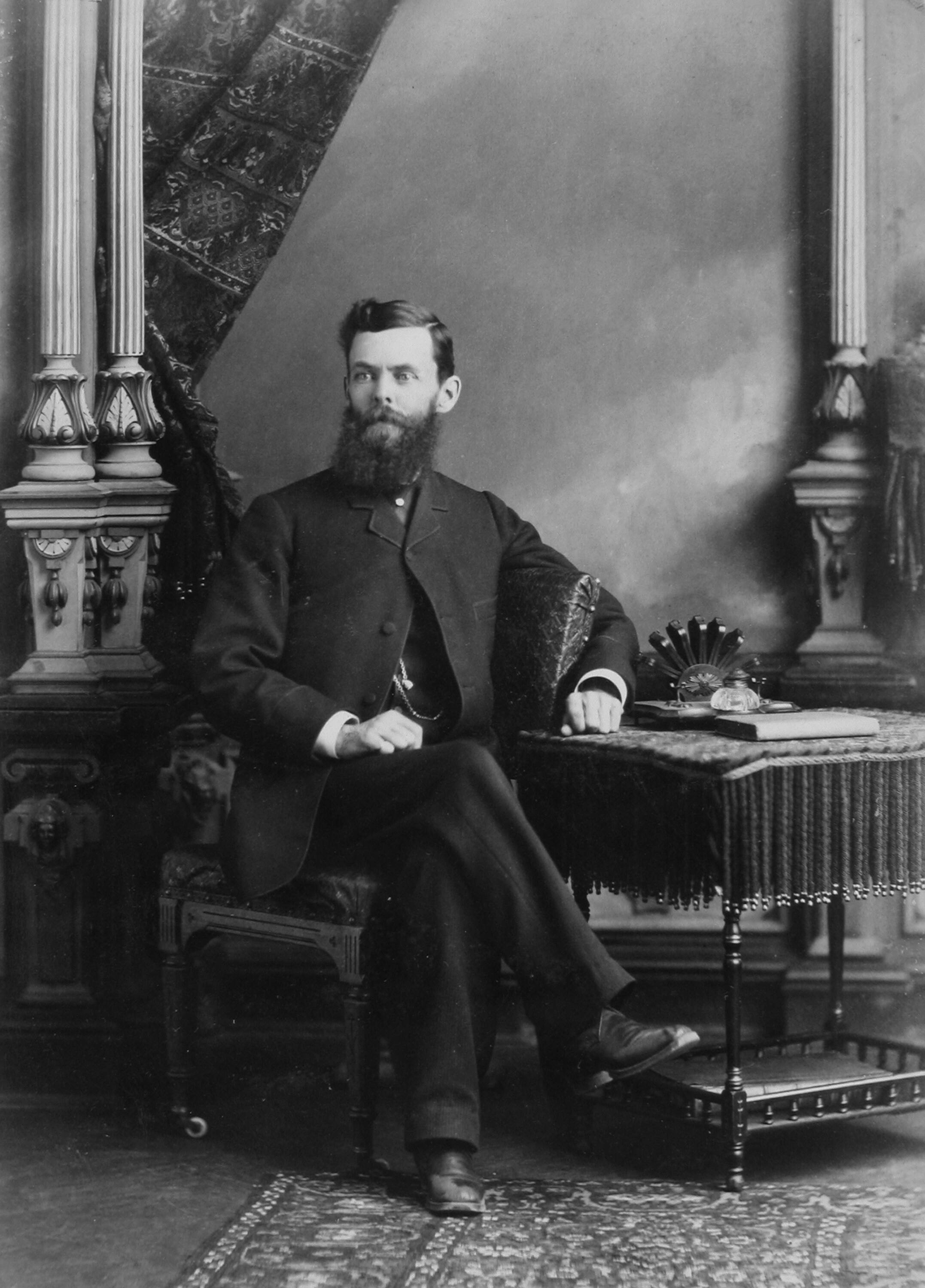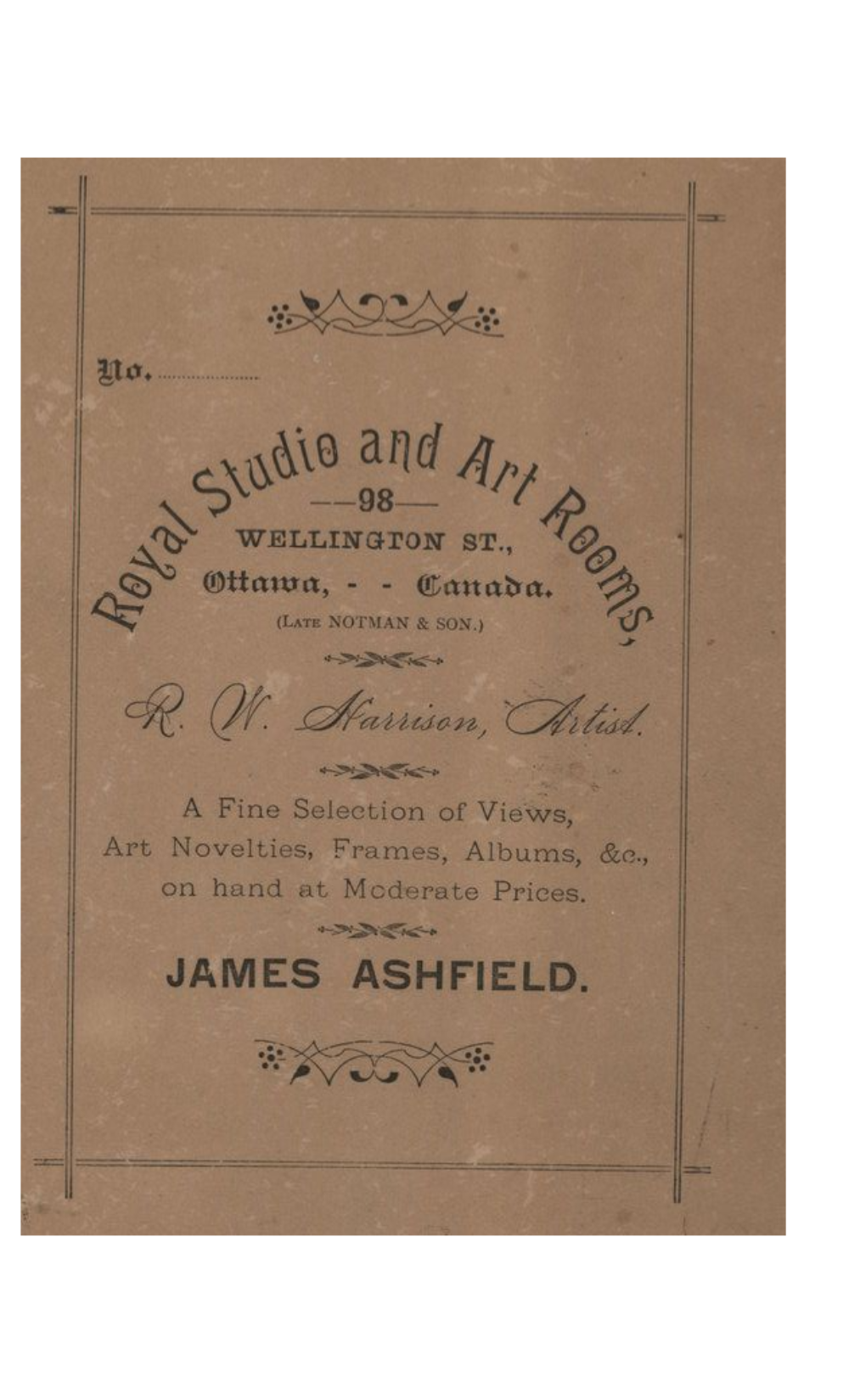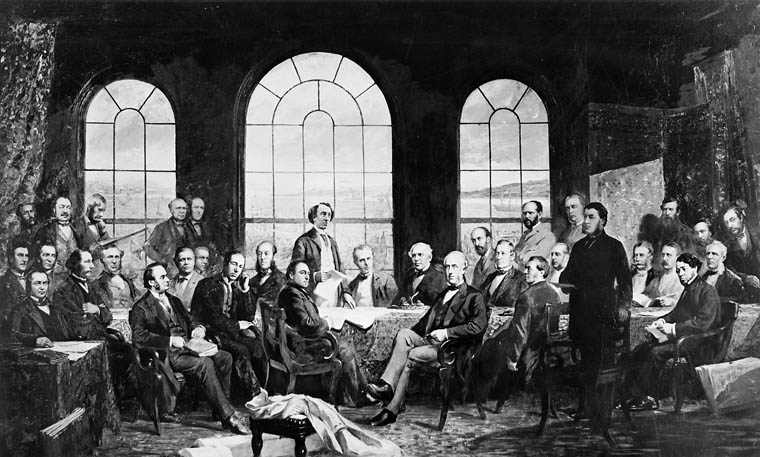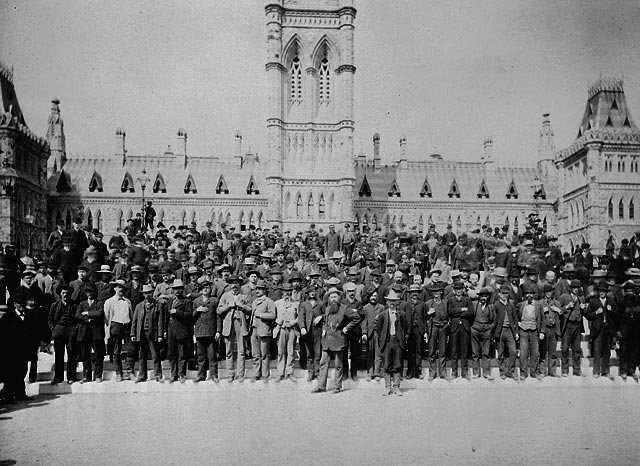
A Photographer Long Forgotten : James Ashfield
James Ashfield
Section 28, Lot 27 NW- East Half
James Ashfield was born in Bytown on October 10, 1847, son of Irish immigrants John and Elizabeth Ashfield. He continued the mercantile business that his father had started in which he specialized in crockery and glassware. In 1872, James Ashfield was one of the founders of the Western Methodist church.
But James Ashfield was also a photographer. When the well-known Montreal photographer, William Notman, closed his Ottawa studio in 1884, Ashfield took over.
He renamed the studio at 98 Wellington Street, opposite the Parliament buildings, the Royal Studio and Art Rooms and sold photographs of well-known politicians, public figures and current events, as well as albums and frames.

By the early 1890s, Ashfield no longer advertised himself as a photographer, but in his brief career, he can be remembered for two accomplishments.
In 1885, he photographed Robert Harris’s famous painting of the “Fathers of Confederation” in the Parliament buildings, and sold copies from his studio. The original painting was later lost in the 1916 fire.
Robert Harris’ well-known historical piece, entitled The Fathers of Confederation. Originally commissioned in 1883 to illustrate the Charlottetown Conference of 1864, the painting was later expanded to represent also the Quebec Conference of 1864. These two meetings formed the basis for Confederation in 1867. The final painting featured 33 “Fathers” and the secretary, Hewitt Bernard. The painting was installed in the original Parliament Building in 1884. After the painting was destroyed by fire in 1916, the Government approached Harris to reproduce the work, but he refused, due to his advanced age.
He also took a series of photographs of the voyageurs selected from the Ottawa area for the little known Nile Expedition, as part of the courageous effort to relieve Khartoum and save Major General Charles Gordon. These photographs are unique and are the sole photographic record of this odd chapter in Canadian military history.
The Nile Expedition, sometimes called the Gordon Relief Expedition (1884–85), was a British mission to relieve Major-General Charles George Gordon at Khartoum, Sudan. Gordon had been sent to the Sudan to help Egyptians evacuate from Sudan after Britain decided to abandon the country in the face of a rebellion led by self-proclaimed Mahdi, Mahommed Ahmed. A contingent of Canadians was recruited to help the British navigate their small boats up the Nile River. The Nile Expedition was the first overseas expedition by Canadians in a British imperial conflict, although the Nile Voyageurs were civilian employees and did not wear uniforms.
Ashfield died at Ottawa, Ontario, on 19 March 1922, his career as a photographer long forgotten by local newspapers who reported on his passing.



